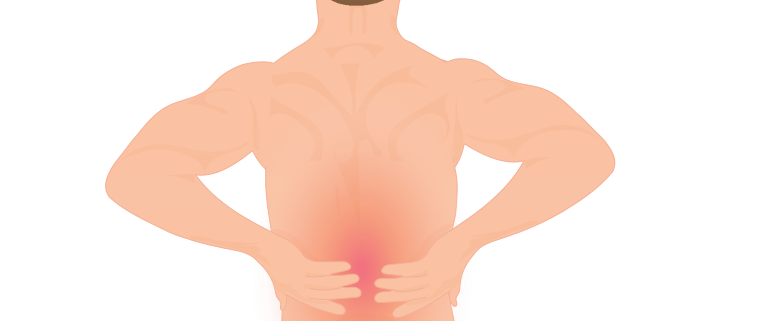
Low Back Pain
Overview
Low back pain is a common problem, with an estimated 80% of the population experiencing it at some point in their lives. It can interfere with daily activities and lower the quality of life. However, it’s often treatable and manageable with the right understanding and approach.
Types
Low back pain is typically categorized into two types: acute and chronic. Acute back pain is short-term, lasting a few days to a few weeks. This type of back pain tends to resolve on its own with self-care. Chronic back pain, on the other hand, persists for 12 weeks or longer, even after the initial injury or cause of the pain has been treated.
Causes
Common causes of low back pain include:
-
- Lumbar strain or sprain
-
- Disc degeneration
-
- Herniated or ruptured discs
-
- Spinal stenosis
-
- Scoliosis or other spinal deformities
-
- Osteoarthritis
-
- Fibromyalgia
Certain factors can increase the risk of experiencing low back pain, such as age, fitness level, pregnancy, weight gain, genetics, and certain mental illnesses like depression and anxiety.
Symptoms
Low back pain can manifest in various ways. Common symptoms include:
-
- Muscle ache
-
- Shooting or stabbing pain
-
- Pain that radiates down your leg
-
- Pain that worsens with bending, lifting, standing or walking
-
- Pain that improves with reclining
Diagnosis
To diagnose low back pain, your doctor will ask about your symptoms, medical history, and perform a physical exam. Specific tests such as x-rays, MRI scans, blood tests, or nerve studies may be conducted for further investigation.
Treatment Options
The treatment for low back pain typically depends on its duration and severity. Options include:
-
- Self-care remedies: Applying heat or cold to the affected area, maintaining regular physical activity, practicing good posture, and taking over-the-counter pain relievers.
-
- Physical therapy: A physical therapist can provide exercises and stretches to strengthen your back and abdominal muscles and improve your flexibility and posture.
-
- Medications: Your doctor may prescribe nonsteroidal anti-inflammatory drugs (NSAIDs), muscle relaxants, or in rarer cases, opioids, steroids, or antidepressants.
-
- Surgery: If conservative measures fail, surgery may be an option. Common types of back surgeries include disc replacement or fusion.
Living With Low Back Pain
Living with consistent back pain can be challenging, but there are several strategies to help manage the condition:
-
- Engage in regular physical activity
-
- Maintain a healthy weight
-
- Quit smoking
-
- Manage stress through relaxation techniques such as meditation and deep breathing
-
- Use assistive devices if needed, such as lumbar support pillows or supportive footwear
-
- Regularly take prescribed medications and communicate with your healthcare provider about any changes in your condition
When to Seek Help
While most bouts of low back pain improve over time with self-care, it’s essential to seek immediate medical attention if you experience:
-
- Severe back pain that doesn’t improve with rest
-
- Pain that spreads down one or both legs, particularly if the pain extends below the knee
-
- Weakness, numbness, or tingling in one or both legs
-
- Back pain accompanied by unexplained weight loss
-
- Back pain accompanied by bladder or bowel problems
-
- Back pain following a fall, blow to your back or other injuries
Remember, the key to successful treatment is early detection. Therefore, don’t hesitate to talk to a healthcare provider if you’re experiencing persistent or worsening back pain.
